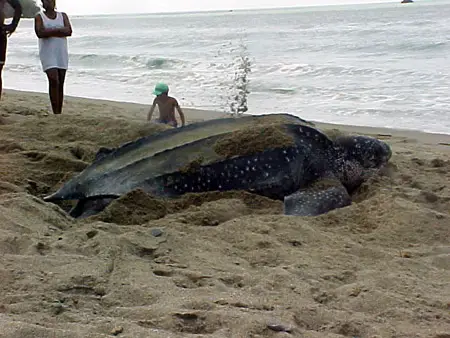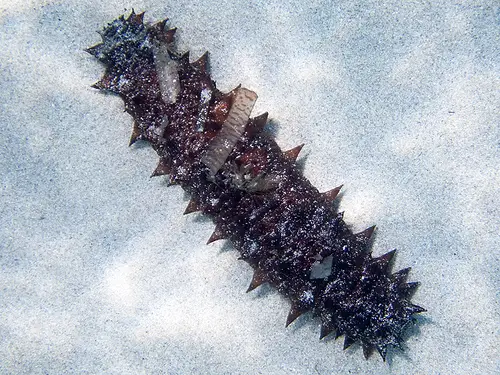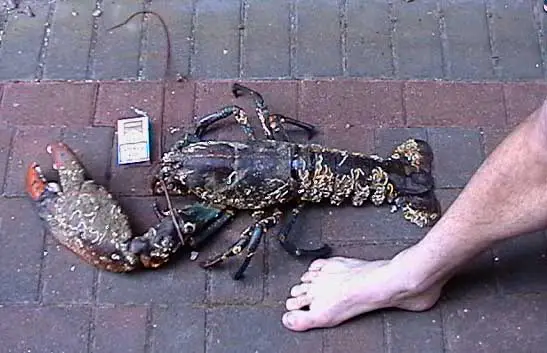Leatherback Turtle
The Leatherback Turtle is the largest turtle in the world. All its lief is spent wearilessly swimming through the tropical and temperate seas, looking for food far from the shore. They can be observed in all seas of the world – from Iceland in the north to New Zealand in the south.
At first glance it might seem this is an ordinary turtle, but upon a closer look it can be seen that this animal lacks the trademark turtle piece of equipment – the shell made of horn substance. Instead, the Leatherback Turtle’s body is covered with a hard skin, with a net of small, connected bones underneath. Thus, these turtles have the armor that protects them from enemies, but still have a hydrodynamic body, causing much smaller resistance when swimming.
Thanks to the front extremities that have developed into flippers, the Leatherback Turtle is an excellent swimmer, although it is still too slow to chase and catch fish and cephalopods. That is why, the animal feeds on the slower sea creatures, such as jellyfishes and plankton. As the body of jellyfishes consists mostly of water, they’re not as nutritious as fish would be and the Leatherback Turtle has to consume incredible amounts of jellyfish to quench the hunger. These turtles are immune to the jellyfish venom to be able to hunt them successfully. Only sometimes it has been observed that the turtles avoid the most dangerous jellyfish.
Although the Leatherback Turtle is a true sea animal, it has to come on dry land to mate. Observations show that this species mate only once a few years, but in one season the female can lay eggs in up to 90 places, with 80 or more eggs in each of them. Leatherback Turtles mate in the sea, near the shore, and the female immediately goes on the land and lays eggs in the whole that she has been using for multiple years. Up to 170 eggs can be laid at a time and after finishing the task, the female returns in the sea. A few months later the young turtles are born and they immediately run for the sea. Many become victims to sea birds and other predators and most of the turtles are killed before reaching maturity.
Due to their nomadic nature, the Leatherback Turtles are hard to keep track of or observe. Therefore, the life expectancy and exact population numbers can only be estimated, although it is known that tourism and increasing population in beaches where these turtles lay eggs, is reducing their numbers. Grown Leatherback Turtles have no natural predators, thus they are relatively safe from other sea creatures.





i think they sould be saved and taken well care of in the wild not in captivity! and the wourld should know how wonderful it is to still have perasoric reptiles on this earth today. even though we still have them today around and if you don’t bealeave me do your homework or ask an paniatolgest{ sorry i tried on the spelling} they just look different they cange all the time always did. open your world of adventure and realy observe the animals around you! there beahaviures and how they do the things that come natrual to them, i do it all the time and the world looks great becuse of it do the same with your kids and it will tell you wonders about them,i know i do that too.look at the sourondings around you real close and do your studies and you will see the history that sorounds you every day!!!! don’t miss that stuff it is too great not to teach otheres and you and your family! think of it this way it keeps people from being so ardaficial and gets them to see more than the swetter in the glss window at the store, and helps us all help every thing and every creature that GOD told us to care for too! love laura! please forgive my spelling, i try.
shut up
very true laura very true i totally agree some one has to care at some point of time